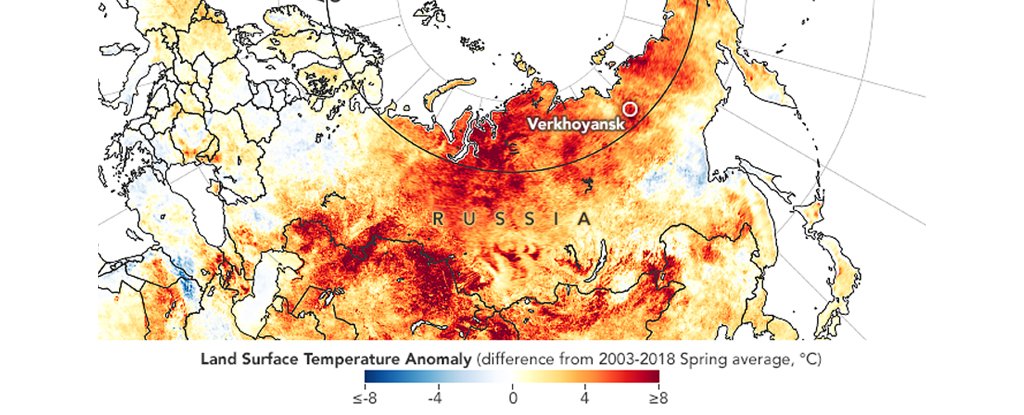Products You May Like
The United Nations said Tuesday it was working to verify reports of a new Arctic record temperature of 38 degrees Celsius (100.4 degrees Fahrenheit) in a Siberian town over the weekend.
The suspected record temperature was measured in the Russian town of Verkoyansk on Saturday during a prolonged heatwave, which has also seen a hike in wildfires, the UN’s World Meteorological Organization said.
The region of eastern Siberia is known for extreme temperatures both in winter and summer months, WMO spokeswoman Clare Nullis told reporters in Geneva.
“Temperatures above 30 degrees Celsius in July are not unusual, but obviously 38 degrees Celsius is exceptional,” she said.
Describing satellite images of the area as “just a mass of red”, she said the situation was “striking and worrying”.
Nullis said that a WMO fast-response evaluation team had tentatively accepted the Verkoyansk reading as “a legitimate observation”.
But she stressed that full-scale verification was a lengthy process that took time.
The Russian Federal Service for Hydrometeorological and Environmental Monitoring (Roshydromet) said temperatures above 31 C had been recorded at the Verkhoyansk station since June 18, peaking at 38 C on June 20.
“This is the highest temperature ever measured at this station since measurements began” in the late 19th century, Marina Makarova of Roshydromet said Monday.
Extreme weather events
The WMO is currently seeking confirmation and details of the temperature measurements.
If confirmed, the UN agency will refer the finding to its Weather and Climate Extremes Archive to verify if it does constitute a record, Nullis said.
Until now the archive, which is like a Guinness book of records for weather and climatic extremes, has not had a category for heat north of the Arctic Circle, Nullis pointed out.
“We are now actively considering setting up this new category,” she added.
Nullis said the soaring temperatures seen in the Arctic were indicative of continuing global warming, even as the world has turned its attention to the novel coronavirus pandemic.
“Climate change isn’t taking a break because of COVID,” she said.
“Temperatures are carrying on rising. We are seeing continuing extreme weather events.”
The Arctic is among the fastest-warming regions in the world, heating at twice the global average.
Siberia, which is home to much of the Earth’s permafrost, has recently witnessed exceptional heat.
Temperatures there soared 10 C above the average last month, helping push global May temperatures to their highest on record, according to the European Union’s Copernicus climate monitoring network (C3S).
‘Zombie’ fires
Globally, Earth’s average surface temperature for the 12 months to May 2020 is close to 1.3 C above pre-industrial levels – the benchmark by which global warming is often measured – according to C3S data published earlier this month.
Under the 2015 Paris Agreement, nearly 200 countries have pledged to cap the rise in Earth average surface temperature to “well below” 2 C, and to 1.5 C if possible.
The heatwave across parts of Siberia and Alaska is causing particular alarm in regions that were engulfed by huge forest fires last year fuelled by record heat, and where the EU’s Copernicus has warned that “zombie” blazes smouldering underground may be reigniting.
The number and intensity of wildfires in northeastern Siberia and the Arctic Circle has continued to increase in recent days, says Copernicus – bringing the daily total intensity to similar levels as that observed last year.
